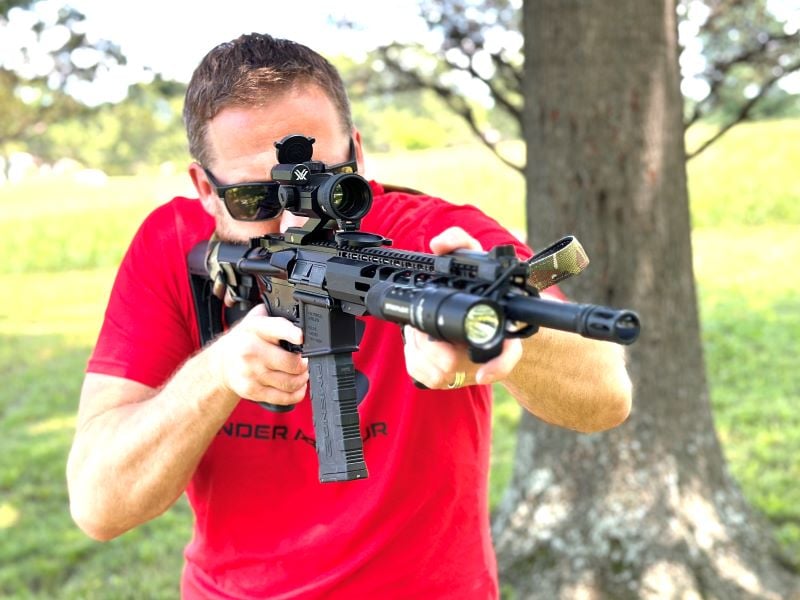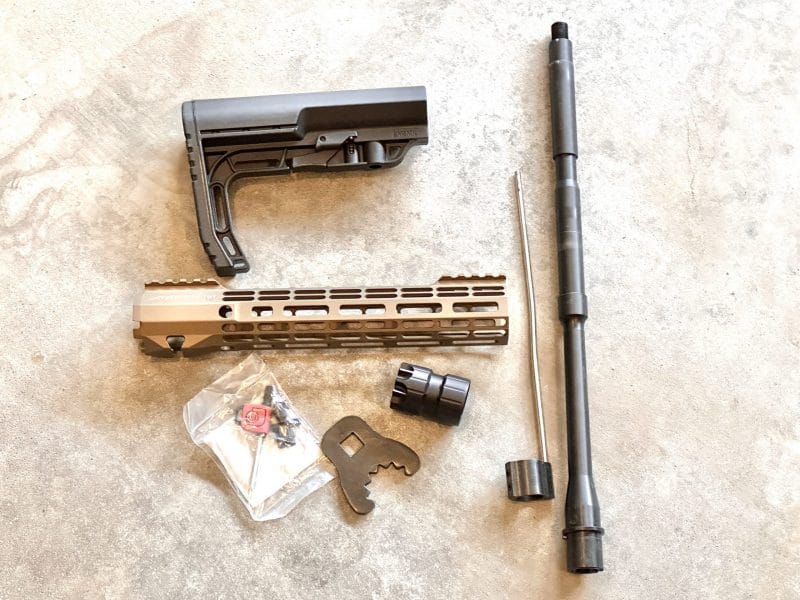If you’ve spent much time talking about guns with people or spent some time reading about guns online, you’ve probably seen the term “Mil-Spec.” It’s a common term, but when you’re new to the gun world, it’s probably a term you have to look up in order to understand what they’re talking about.
Another term you’ll see tossed around in reference to firearms and gun parts is “commercial-spec.” Today we’re going to take a look at what those two terms mean, how they are different, and why the difference is significant to gun owners.
What is Mil-Spec?
When the military adopts a firearm, they set a specification for each part, and that is where the term “Mil-Spec” comes from: military specifications. They determine the exact shape and design, material used, and overall quality of that part. A part that will fit on an AR-15 made from a cheaper material than specified by the military’s guidelines is not a mil-spec part. Many people today use the term “Mil-Spec” as another word for “compatible.”
Any firearm that has been contracted by the U.S. Military has a set of specifications for each part of that firearm. We see this term the most when dealing with AR-15 rifles, but this is one type of firearm out of many that has “Mil-Spec” parts. Because we see this term associated with AR-15 rifles so much, we will use this iconic American rifle as an example in this article.

What is “Commercial”?
In the context of firearms, parts, and associated gear, the term “commercial” refers to anything that is not produced to the specifications of the military. If it doesn’t meet military standards it would be considered commercial.
If you are new to guns, you may be wondering what the difference is and why it even matters. After all, a gun is a gun, right? But it does matter if it’s Mil-Spec or commercial. And without having some basic knowledge about the difference between the two, things can be confusing.
Compatibility and Quality
While the Mil-Spec part does refer to its compatibility, don’t forget about the quality when you’re shopping around. You may find a part that is advertised as Mil-Spec but isn’t made from the same material or subjected to the same military standards of Quality Control testing.
An example would be upgrading to a custom trigger for your AR-15 that makes it light and crisp. A competition shooter or hunter may wish to make this upgrade for obvious reasons. While the trigger is compatible with the rest of the rifle, it’s not a true Mil-Spec trigger. An AR-15 chambered in .223 Remington can easily be found and most of the parts on that rifle will be compatible with Mil-Spec parts. But Mil-Spec barrels are chambered in 5.56 NATO not .223 Remington.
Another example is the quality process involved in manufacturing the barrel. A company may claim their barrel is “Mil-Spec” because it is compatible with a mil-spec upper receiver. They may even use the proper material for manufacturing the barrel. But if they do not have the barrel independently certified and MPI (magnetic particle inspected) it is not completely Mil-Spec.

Are all AR-15 rifles compatible?
The short answer is no, they are not. Most of the AR-15 market is standardized, allowing us to use an assortment of parts from various manufacturers on one rifle. However, not all companies stick to Mil-Spec parts for compatibility. Some use the overall design of an AR-15 and then modify it to make their own weapon with proprietary parts. There is nothing wrong with this if you don’t plan on changing anything on the weapon.
The first time I built an AR-15, I was more or less “winging” it and started buying parts online for the build. I thought if a part was made for an AR-15, then it should work. When I saw something referred to as Mil-Spec, I assumed it meant the military version of that part. But I wanted a gun with upgraded parts and colors, not a standard, plain, military specification gun. As I put the AR-15 together, I found the buffer tube didn’t work with the stock I purchased. The tube was slightly larger and would not work with a Mil-Spec stock I had purchased. After that, I started paying more attention to the differences between Mil-Spec and commercial components.
The AR-15-style rifles chambered in 9mm that have become popular over the past few years are another example. Many of them advertise their 9mm rifle as compatible with mil-spec parts. This means the grip, buffer tube, trigger, and safety selector are compatible with parts from a standard 5.56 NATO rifle. But some of these rifles have mixed compatibility parts, so keep that in mind. My FX-9 AR pistol is a very short little gun that shoots great, but one thing I don’t like is the proprietary charging handle on the model I purchased. I like extended charging handles better, but the FX-9 is not compatible with Mil-Spec ones.

Note: All photos in this article were taken before the ATF restriction on arm braces. At the time of this writing, the arm brace ban is being challenged in court.
Mil-Spec vs. Commercial: Why does it matter?
In short, parts built to the military’s specifications are interchangeable and meet minimum quality standards. This doesn’t mean that all Mil-Spec parts are better. Some manufacturers exceed the minimum requirements set by the military. But it sets a standard for everything to be based on and compared to.
A Mil-Spec barrel is chrome lined. There are newer methods of manufacturing barrels that are just as durable as chrome lining. However, some manufacturers make cheaper barrels that are not lined and use lower-grade steel. Unless you want a different part for a specific reason, I would recommend using all Mil-Spec components when building your first AR-15. That said, keep in mind that when you’re searching for parts, don’t just look for the term “Mil-Spec.” Be sure to read the manufacturer’s product information to confirm that you are buying a quality part. Its parts are advertised as Mil-Spec, they should fit on any AR-15 rifle, but the construction materials and quality control standards should also be listed.

Summary
A true Mil-Spec rifle can only be made for the military, tested by military inspectors, and issued for use by the military. But today, the term Mil-Spec is the closest we have to a government rifle in the civilian world. There is nothing wrong with this and today’s manufacturers do a great job at making quality parts as close to the military’s specifications as possible.
If you are building a rifle or upgrading some parts, using components made to military specifications is the best way to go. Just remember when you’re shopping to check the details and make sure the manufacturer is following those guidelines for material and quality control. Cheaper parts made from lower-grade materials are not recommended. No one has tested parts and guns as much as the US military. It only makes sense to use their minimum standards for your next weapon.


